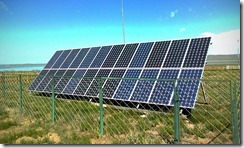Crowdfunding Spreads the Word About Important Solar Projects
Web-based crowdfunding platforms, like KickStarter or IndieGoGo, are an excellent way to take promising projects with funding needs beyond the originator’s financial resources. They also offer individuals the opportunity to become backers in return for a share of the eventual profits or products. This can be said for virtually any project, no matter how ridiculous it may seem, but one such area in our society that needs more support is renewable energy. With individuals becoming more environmentally-conscious, there is sure to be a consumer market aimed at one of the most viable forms of clean energy: solar power.
These crowdfunded projects have already made great strides in progressing the development of alternative resources. Bill Nye’s LightSail is an ongoing project to launch mylar sails aboard a small CubeSat satellite to collect solar radiation from above the Earth. The Kickstarter launched on May 12, 2015 and before the end of June, the LightSail was able to reach a total of $1 million from 19,000 backers. As of today (August 13, 2015), the project has gained 23,331 backers who have pledged $1,241,615. In 2016, the continuation of the LightSail, sponsored by the Planetary Society, will test the possibility of propelling a CubeSat satellite in open space solely from the pressure of sunlight on the sails. An implication for space-based solar power might be solar panel equipped satellites with huge mirrors that collect sunlight and reflect the rays to a solar collector, afterward beaming the solar energy safely down to Earth as microwaves or laser beams.
Although incredibly important and groundbreaking, the LightSail seems to be confined to space. However, there are many various projects that have been successful and make a direct impact here on Earth. According to Tech Republic, some successful crowdfunded solar-related projects have been backed by Oakland-based Mosaic. This includes the installation of solar panels on 1,500 military homes in Fort Dix, NJ, as well as the installation of a solar roof on Pinnacle Charter School in Denver, CO which doubled as clean energy education for the students.
Kickstarter may be the most well-known crowdfunding platform but there have been others that dedicate themselves solely to various solar projects. CollectiveSun finances solar projects that help nonprofits switch to solar to save on energy expenses while supporting their missions, and has successfully funded solar energy system installations at Oberlin Dance Collective in San Francisco.
The government has also recognized the importance of renewable energy in a world where fossil fuels are dwindling. On August 7, 2015, the White House launched a new initiative to increase solar access for all Americans. It focuses on assistance for low- and moderate-income housing and community solar. Although the initiative does not explicitly call out loans and subsidies to big companies like SolarCity and Tesla, it has many benefits for the solar industry. They include a greater penetration of solar power among lower income communities, achieving the greatest level of diversity among the nation’s workforce, and boosting solar as an essential element of our national energy. Direct Energy points out that the United States currently gets about 84 percent of its energy from fossil fuels, so hopefully this initiative will encourage many to decrease their use of this “dirty energy” and recognize solar as a viable resource.
Because of the well-defined and limited scope of the initiative there remains much room for crowdfunding solar projects that will have broad appeal in more specialized venues such as the arts, education, places of worship or military housing. Crowdfunded solar projects generate buzz, and having concrete examples of successful solar energy projects in the collective public eye do their part in enhancing the solar industry in general.
There are numerous amounts of projects just waiting to make a difference in our homes, communities, and eventually the world. Kickstarter’s solar projects have included Solar Roadways, a modular system of solar panels that can withstand the weight of trucks, SunPort using solar energy without solar panels, and Lowline, a solar-powered underground park in New York City. Some, like Solar Roadways, have generated wide, and continuing interest. As we persist in the coming years to support and spread knowledge about solar energy, perhaps many others, like wind, water, and even algae, will come into the limelight and eventually replace the majority of fossil fuels.


